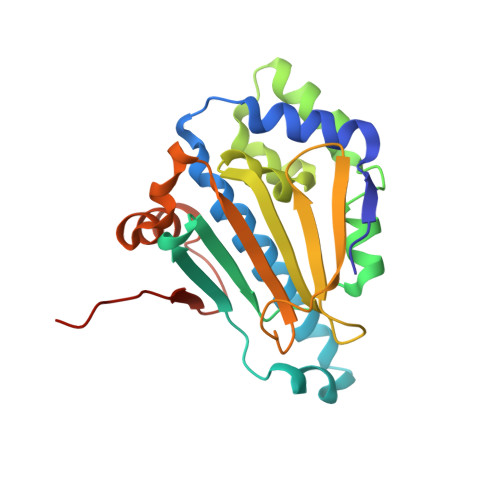Synthesis of 19-substituted geldanamycins with altered conformations and their binding to heat shock protein Hsp90.
Kitson, R.R., Chang, C.H., Xiong, R., Williams, H.E., Davis, A.L., Lewis, W., Dehn, D.L., Siegel, D., Roe, S.M., Prodromou, C., Ross, D., Moody, C.J.(2013) Nat Chem 5: 307-314
- PubMed: 23511419
- DOI: https://doi.org/10.1038/nchem.1596
- Primary Citation of Related Structures:
4AS9, 4ASA, 4ASB, 4ASF, 4ASG - PubMed Abstract:
The benzoquinone ansamycin geldanamycin and its derivatives are inhibitors of heat shock protein Hsp90, an emerging target for novel therapeutic agents both in cancer and in neurodegeneration. However, the toxicity of these compounds to normal cells has been ascribed to reaction with thiol nucleophiles at the quinone 19-position. We reasoned that blocking this position would ameliorate toxicity, and that it might also enforce a favourable conformational switch of the trans-amide group into the cis-form required for protein binding. Here, we report an efficient synthesis of such 19-substituted compounds and realization of our hypotheses. Protein crystallography established that the new compounds bind to Hsp90 with, as expected, a cis-amide conformation. Studies on Hsp90 inhibition in cells demonstrated the molecular signature of Hsp90 inhibitors: decreases in client proteins with compensatory increases in other heat shock proteins in both human breast cancer and dopaminergic neural cells, demonstrating their potential for use in the therapy of cancer or neurodegenerative diseases.
Organizational Affiliation:
School of Chemistry, University of Nottingham, University Park, Nottingham NG7 2RD, UK.















